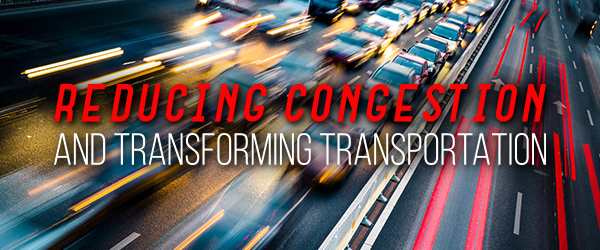
Adaptive Traffic Lights: Reducing Congestion and Transforming Transportation
Traffic congestion in the United States is the highest globally, according to traffic specialists at INRIX. The organization estimates the average commuter spends nearly 50 hours per year stuck in traffic. City officials are eagerly searching for solutions to ease congestion, manage civilian time, and conserve environmental resources as increased urbanization and low fuel costs gradually surpass the capabilities of city infrastructure. One of those solutions lies in adaptive traffic signal management. And while only 3% of US cities were utilizing the technology behind AI-based traffic management systems in 2015, the gradual trend has the potential to streamline and reduce congestion nationwide.
The Cost of Congestion
There are real ramifications to traffic inefficiencies. Bogged down traffic patterns impact the quality of life for drivers in a municipality and reduce the orderliness of a city. This struggle is felt poignantly as cities grow and commuters take to the roads. It’s estimated that 11 million Americans commute more than an hour each way to work. This excessive road time is expensive, as commuters have high fuel costs and waste valuable time due to sitting in traffic.
The impact of traffic congestion is far-reaching. New residents are deterred from moving into a new area, and in turn, urban growth and financial output are restricted. Additionally, traffic congestion contributes to high CO2 levels, putting residents at a greater risk of health effects such as cardiovascular disease and harming the environment.
With these repercussions in mind, local governments, traffic agencies, and city planners are adopting innovative technologies enabled by the Internet of Things (IoT) and AI to manage the flow of traffic and reduce congestion. One promising innovation is adaptive AI-based smart traffic signal management and machine learning.
The Drawbacks of Traditional Traffic Signals
Operating on a wired SCADA system, traditional “static” traffic lights allow administrators to monitor traffic and collect data. However, they come with a few drawbacks. These systems require manual software updates to change traffic signal sequences and often place city managers in a reactive rather than proactive position when it comes to managing traffic congestion.
The outdated systems also require repair and frequent updates as traffic flow needs a change in response to the growing population in an area, and the additional maintenance costs pile up for urban transportation departments.
Innovative Traffic Management
There are several traffic management applications that can directly benefit transportation systems. Prioritizing public transportation is one method. City governments can use adaptive signal management to allow buses and public vehicles to have the “green light” when in service for more efficient mass transit. The benefits of prioritizing public transportation are numerous. Faster, more streamlined transportation boosts productivity by getting people to work faster (and with less stress).
Traffic management through AI-based smart traffic signal management reduces fuel waste and encourages residents to use public transportation instead of their vehicles, which prevents gridlock. In the future, smart traffic lights will be interconnected with smart vehicles, enabling streamlined communication. And with smart vehicles growing in popularity, the environmental benefits add up quickly – in fact, full adoption of this technology could cut CO2 emissions in half per vehicle.
Looking ahead, there are some additional innovations that adaptive traffic lights and IoT can enable. For instance, it’s likely that traffic signals will combine with other LTE-connected devices such as traffic cameras, sensors, and signage. Also, traffic signals will likely be controlled by AI-based traffic management systems that utilize massive real-time video data from street intersections. Infrastructure will have to adapt to these technologies will have to be implemented, and edge computing is one technology that enables this future functionality. Edge computing will likely be required to process the video as part of the advanced traffic management systems.
SYNDÉO is helping cities by paving the way to create space under city-owned Right-Of-Way (ROW) for edge computing systems that support advanced traffic management. They also offer cities superior concealment and security for smart city technology deployments in densified areas. Use cases include the deployment of small cells, antennas, sensors, cameras, beacons, edge computing, and more.
Mini-vaults are a dynamic dual purpose asset that enables secure and unobtrusive IoT and advanced traffic management technology deployments. They have load-bearing covers to protect the enclosure from wayward trucks cutting corners at intersections while also serving as a detectable warning panel that serve the visually impaired with physical and visual cross-walk cues. Adaptive traffic lights have the potential to ultimately collaborate with IoT technology to autonomously control traffic patterns, increase pedestrian safety and reduce congestion.
Adaptive, video-based traffic signal management systems, supported by edge computing, have the potential to revolutionize traffic management. AI-based smart signals enable consumers and city planners to be better stewards of resources and become more sensitive to environmental issues. Instead of widening roads to fight traffic congestion, cities can harness the power of “smarter” solutions to monitor and manage traffic in real-time.
Transportation departments can boost productivity, lower CO2 levels, and improve quality of life for citizens by adopting smart traffic signals powered by AI and the IoT. More smarts require more space for deployment and roadside cabinets are becoming over crowded, large and an eyesore. Mini-vaults under ADA-required curb ramps enables more space that is secure and totally unobtrusive.

